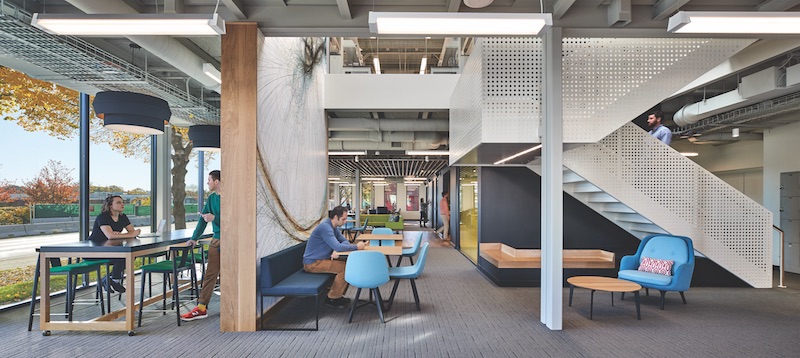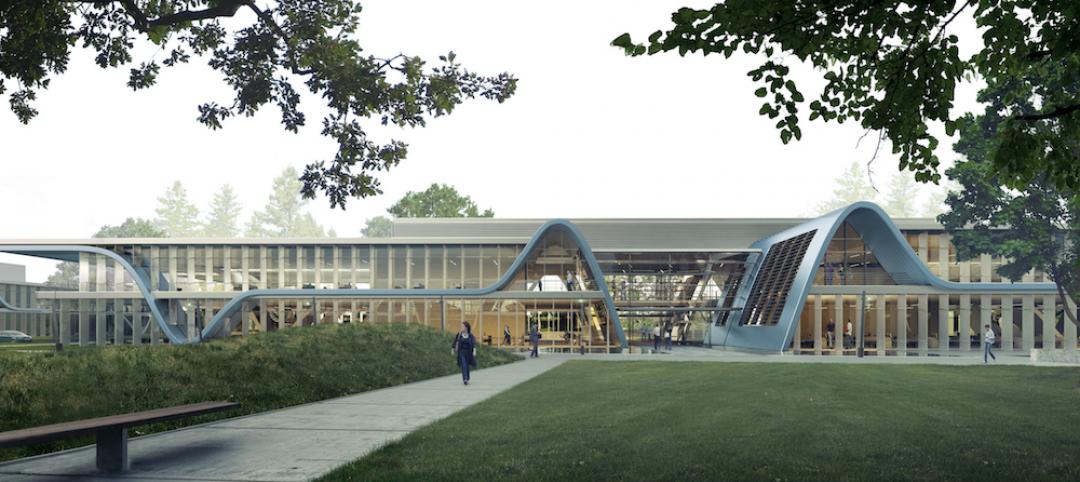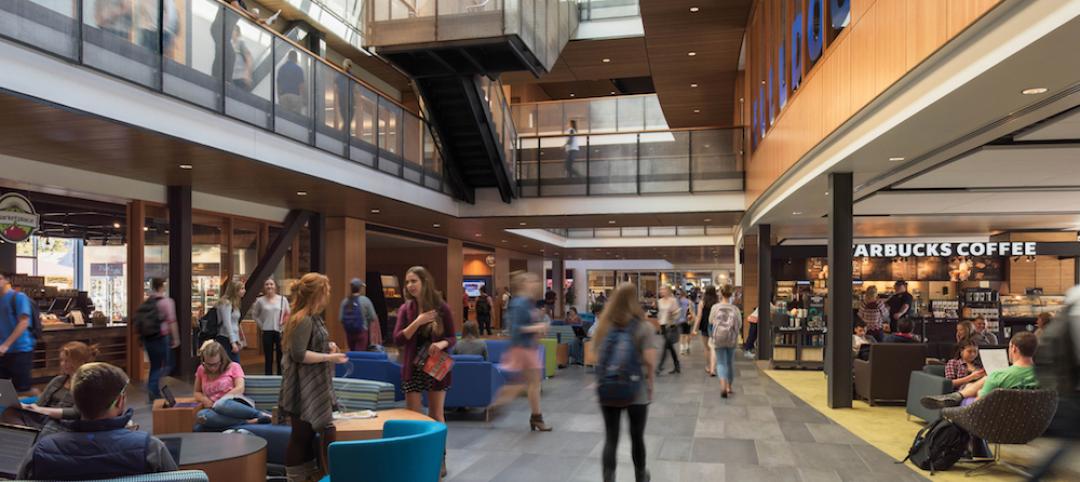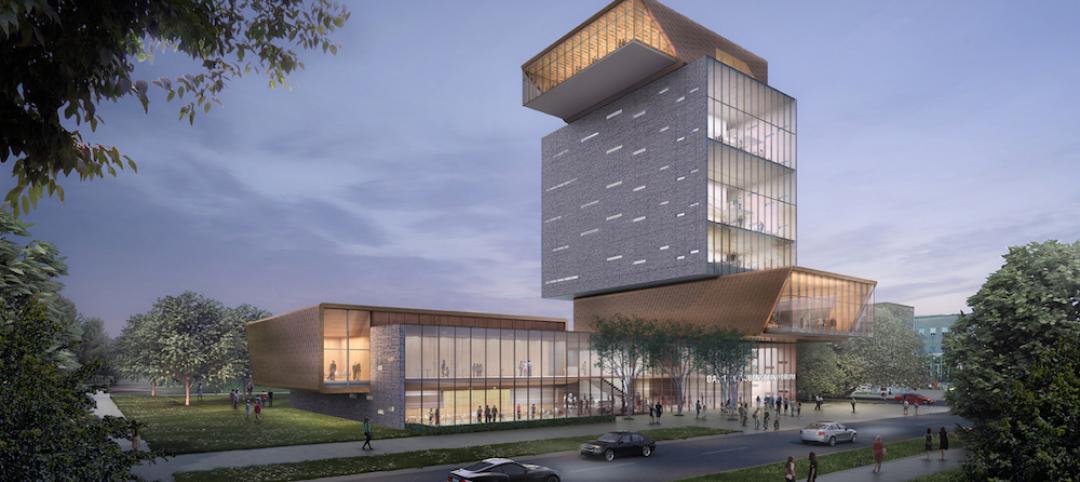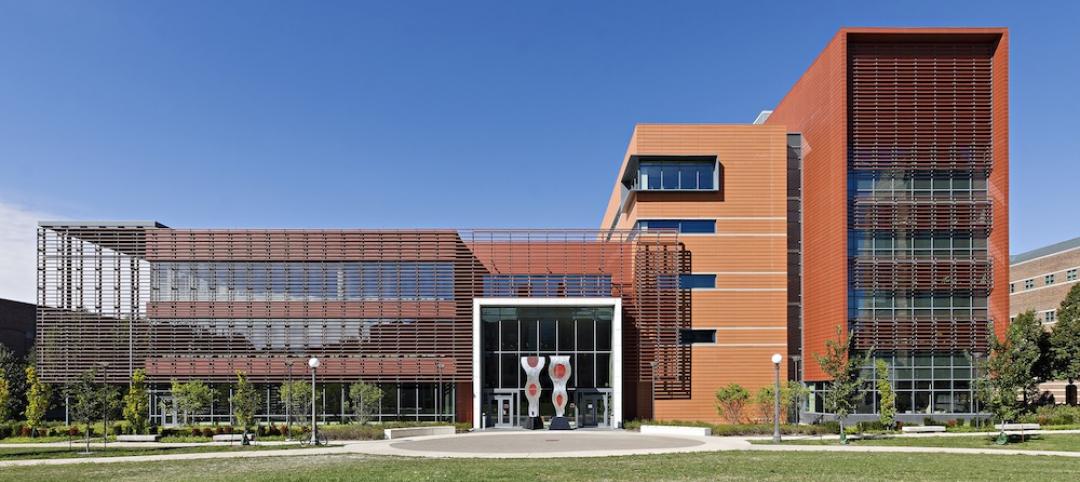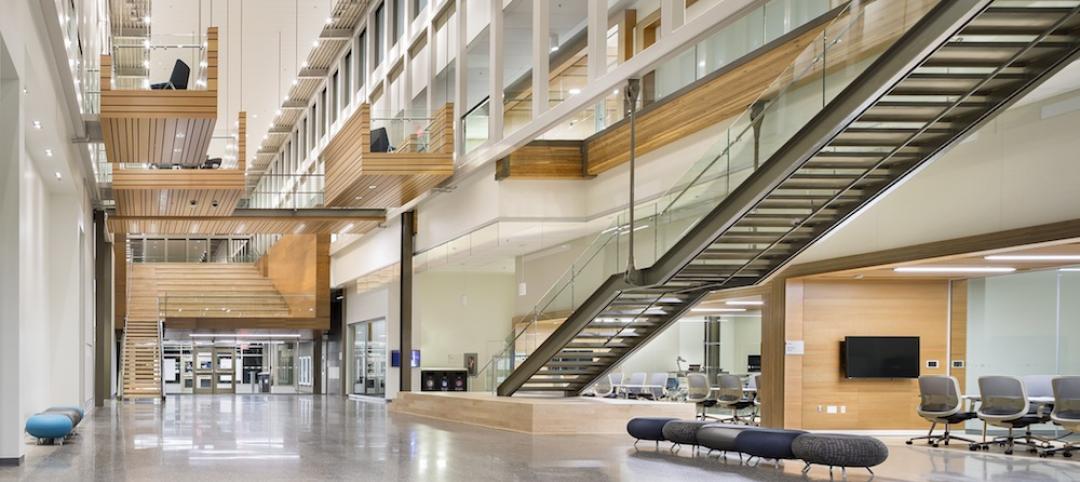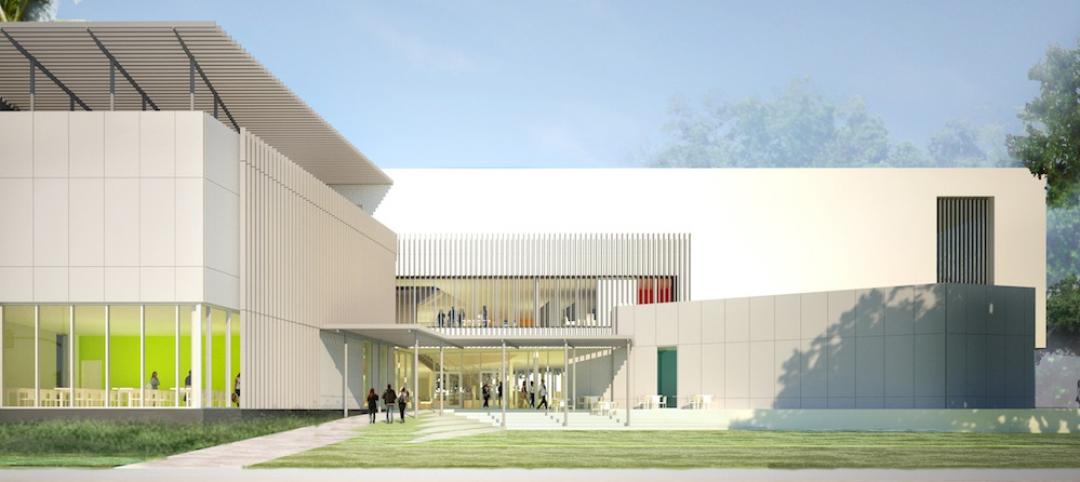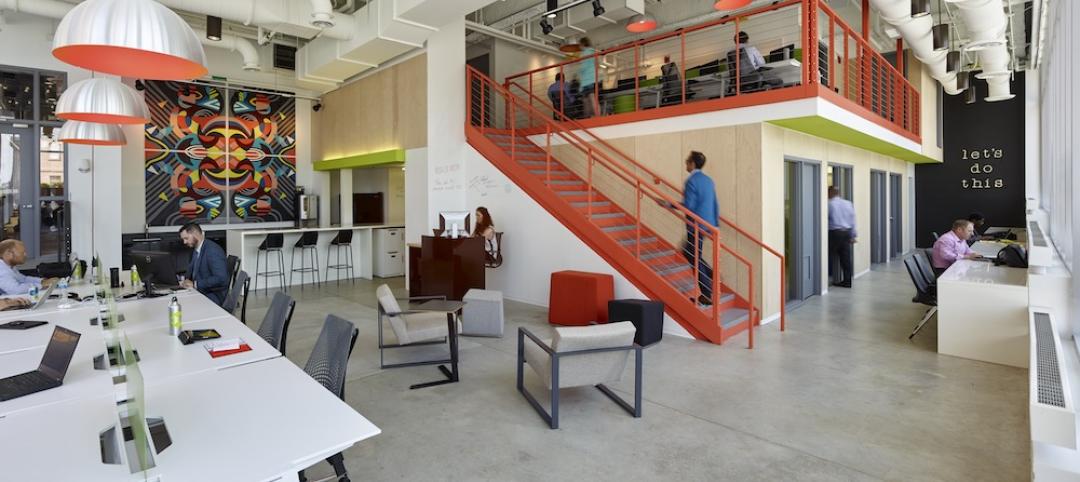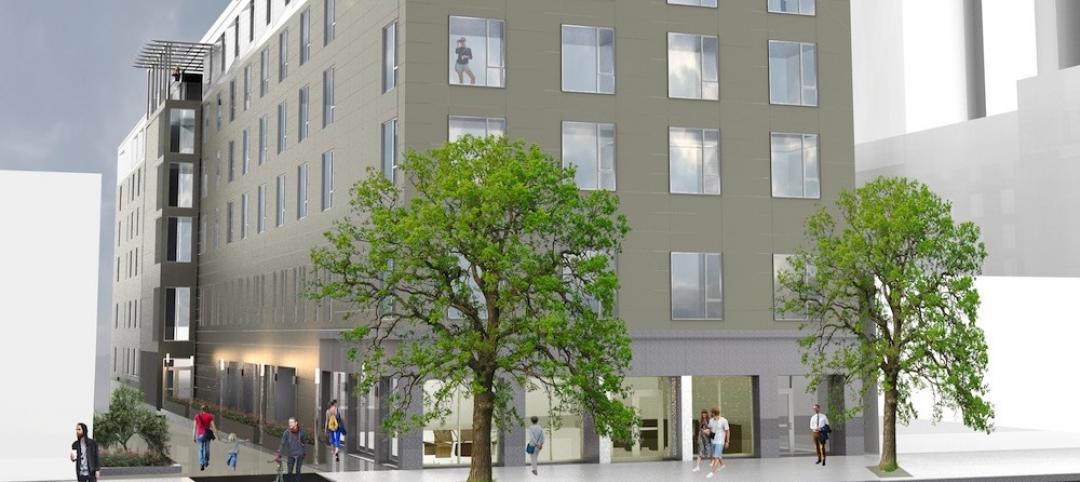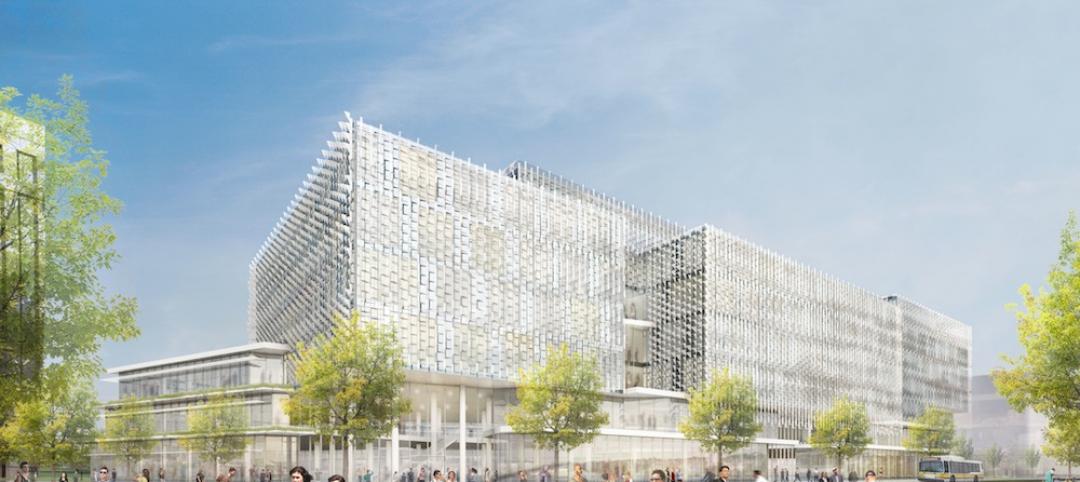Makerspaces and interdisciplinary mashups are connecting students with each other—and with the outside world.
Students at the University of Utah can choose to live in an on-campus environment that’s immersed in discovery and entrepreneurship. The 400-bed Lassonde Studios residential hall features a 20,000-sf innovation space where residents can test ideas, build prototypes, and launch companies. Designed by CannonDesign’s Yazdani Studio, in association with EDA Architecture, the building reflects a broader trend toward hands-on spaces that encourage students to collaborate within and beyond the physical campus.
“Universities are increasingly interested in the commercialization of technologies or research that offer opportunities to partner with the private sector,” says Don Hensley, VP and Education Sector Leader (U.S. West) with Stantec.
The Center for the Sciences & Innovation at Trinity University, San Antonio, designed by EYP Architecture & Engineering, features “The Cube,” a high-performance makerspace with movable walls, mobile team stations, and gigantic garage doors to support entrepreneurial interaction among students and faculty.
“There’s increased demand for spaces that physically bring students together—across disciplines—to work collaboratively on a wide variety of creative projects,” says John Baxter, AIA, LEED AP, Higher Education Sector Leader at EYP. “These specialized makerspaces elevate hands-on, project-based learning and provide experiential opportunities within a structured, mentored environment.”
Today’s multi-functional buildings support a diverse range of academic programs, with transparent walls to foster interdisciplinary collaboration. “The idea is to literally and figuratively break down the walls between departments so that students and faculty are working together more consistently and organically,” says Hensley.
A nationwide focus on science and technology buildings is helping universities compete for researchers and grants, as well as to increase their enrollment of students pursuing degrees in science, technology, engineering, and math.
The new Yale Science Building is designed with flexible laboratories to accommodate interdisciplinary research in molecular, cellular, and developmental biology; molecular biophysics and biochemistry; and atomic, molecular, and optical physics. Pelli Clarke Pelli Architects and Stantec collaborated on the seven-story, 300,000-sf building, which will be constructed in the campus’s Science Hill precinct.
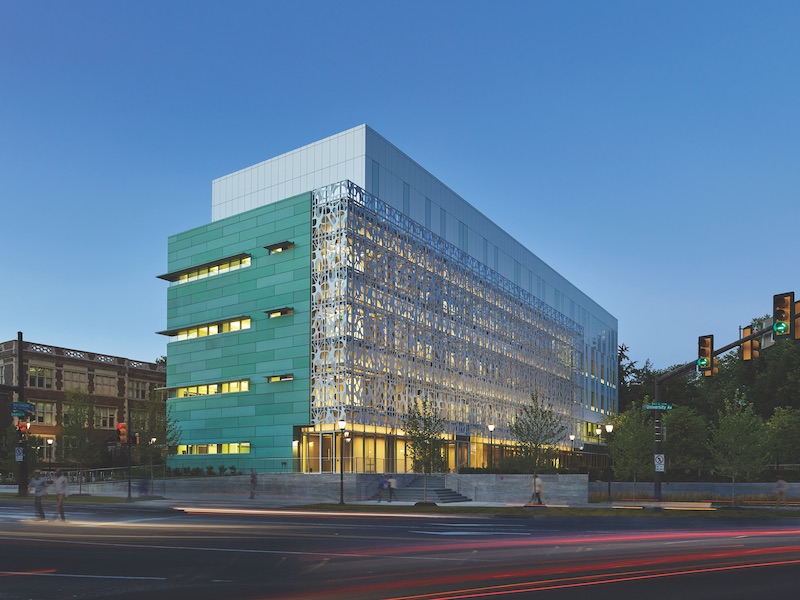 Adorned with a biomorphic aluminum sunscreen that shades the curtain wall on the south side of the building, the 78,000-sf Stephen A. Levin Building at the University of Pennsylvania integrates psychology, biology, and behavioral sciences under one roof with research laboratories, teaching facilities, and collaboration and study spaces. Photo: Alan Karchmer.
Adorned with a biomorphic aluminum sunscreen that shades the curtain wall on the south side of the building, the 78,000-sf Stephen A. Levin Building at the University of Pennsylvania integrates psychology, biology, and behavioral sciences under one roof with research laboratories, teaching facilities, and collaboration and study spaces. Photo: Alan Karchmer.
experimenting with novel funding SOLUTIONS
Public and private universities are looking for money—and cost savings—anyplace they can. “Institutions are turning to external partners to deliver financial, construction, and operating solutions to their housing and other student life needs, and they’re also looking at public-private partnerships to meet their research and academic facilities needs,” says Eric Beattie, PE, LEED BD+C AP, Leader of the Higher Education Center of Excellence at Gilbane Building Co.’s Boston office.
The Agricultural Engineering Building under construction at Penn State University is the school’s first project to be delivered using integrated project delivery. Architect EYP, contractor DPR Construction, and the university are sharing equally in the project’s risks and rewards.
Prefabrication is proving to be an efficient, eco-friendly construction method. At the University of Virginia, Barton Malow is overseeing the renovation of a half-dozen four-story residential buildings originally constructed in the 1950s. “We’re collaborating with multiple trades to create modular prefab piping and mechanical rooms, which will help accelerate production and installation time and improve job site safety,” says Barton Malow Vice President Todd Ketola.
Advanced technology is also helping to optimize construction quality and efficiency at Washington University in St. Louis. McCarthy Building Cos. is using drones to take aerial measurements of the excavation site on the multi-building campus expansion; 4D scheduling technology will provide the construction crew and subcontractors with real-time progress of the concrete installations and MEP systems during the two-year project.
“While the project is comprised of multiple buildings and landscape elements that each have a unique design and function, it’s important that it function as a single project from a construction standpoint,” says McCarthy Project Director Ryan Moss.
Some universities are focusing on the renovation and reuse of signature buildings to enhance the functionality of the core campus while maintaining the institution’s overall character and identity. The University of Notre Dame Campus Crossroads project, the largest building initiative in the university’s 174-year history, is designed around the legendary Notre Dame Stadium, which is being renovated and expanded. Three new buildings will surround the storied football edifice, creating more than 750,000 sf of teaching, research, performance, meeting, and hospitality space.
ALSO SEE: BD+C GIANTS 300 UNIVERSITY RANKINGS
Top 110 university architecture firms
Top 55 university engineering firms
Top 95 university construction firms
Traditional higher education institutions are also facing growing competition from lower-cost alternatives, such as so-called MOOCs (massive open online courses) and other alternative models. “As universities compete with the convenience of online learning, there is great focus on finding ways to engage the student. Face-to-face interaction, hands-on learning, and hybrid learning offer an on-campus experiential element that students can’t get from the Internet,” says Stantec’s Hensley.
“The cost of education has risen much faster than the cost of living, and the current rate of increase is not sustainable,” says David Hatton, AIA, Director of Education, CannonDesign. “Creative entrepreneurs are starting to fill the gap with lower-priced, customizable educational platforms that provide an equivalent level of education. Traditional colleges will need to adapt in order to separate themselves from this new competition.”
SEE ALL 2017 GIANTS 300 RANKINGS
Related Stories
Office Buildings | Jun 10, 2016
Form4 designs curved roofs for project at Stanford Research Park
Fabricated of painted recycled aluminum, the wavy roofs at the Innovation Curve campus will symbolize the R&D process and make four buildings more sustainable.
University Buildings | Jun 9, 2016
Designing for interdisciplinary communication in university buildings
Bringing people together remains the main objective when designing academic projects. SRG Design Principal Kent Duffy encourages interaction and discovery with a variety of approaches.
Building Team Awards | May 31, 2016
Gonzaga's new student center is a bustling social hub
Retail mall features, comfortable furniture, and floor-to-ceiling glass add vibrancy to the new John J. Hemmingson Center.
University Buildings | May 26, 2016
U. of Chicago approves Diller Scofidio + Renfro design for new campus building
With a two-story base and 165-foot tower, the Rubenstein Forum will have room for informal meetings, lectures, and other university events.
University Buildings | Apr 27, 2016
SmithGroupJJR’s Electrical and Computer Engineering Building named 2016 Lab of the Year
Sustainable features like chilled beams and solar screens help the University of Illinois research facility use 50% less energy than minimum building energy efficiency standards.
University Buildings | Apr 25, 2016
New University of Calgary research center features reconfigurable 'spine'
The heart of the Taylor Institute can be anything from a teaching lab to a 400-seat theater.
University Buildings | Apr 13, 2016
Technology defines growth at Ringling College of Arts & Design
Named America's “most wired campus" in 2014, Ringling is adding a library, visual arts center, soundstage, and art museum.
University Buildings | Apr 13, 2016
5 ways universities use new buildings to stay competitive
From incubators to innovation centers, schools desire ‘iconic gateways’ that appeal to students, faculty, entrepreneurs, and the community.
University Buildings | Apr 4, 2016
3 key trends in student housing for Boston’s higher education community
The city wants to add 18,500 student residence beds by the year 2030. CannonDesign's Lynne Deninger identifies three strategies that will help schools maximize value over the next decade or so.
University Buildings | Mar 15, 2016
Behnisch Architekten designs Harvard’s proposed Science and Engineering Complex
The 497,000-sf building will be the home of the John A. Paulson School of Engineering and Applied Sciences.


